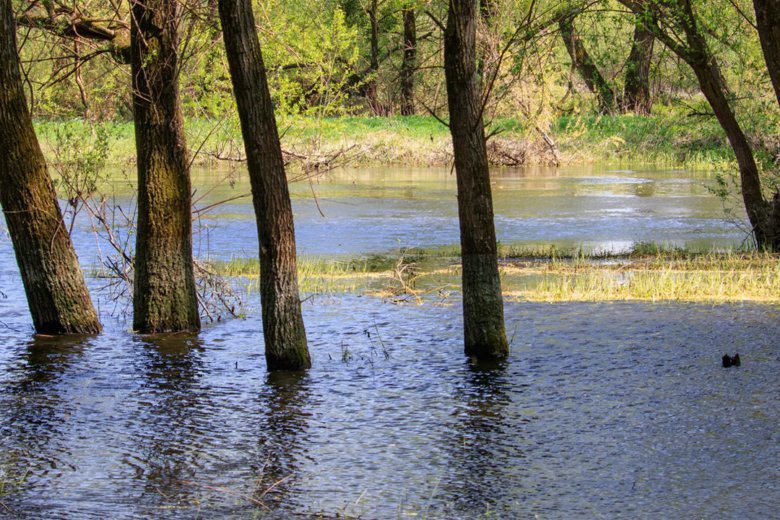
Standing water can damage or drown tree roots after about a week, warns an arborist from Chesapeake Bay, Maryland.
“Trees breathe through their roots, like you and I breathe through our lungs,” said Lou Meyer, assistant district manager of the Davey Tree Expert Company. “A full week of standing water — that’s when you need to get really concerned.”
Oversaturated soil can asphyxiate and kill a tree, lead to root rot or prevent an appropriate intake of nutrition.
To help prevent flooding, consider getting or adjusting downspouts on your home to redirect water away from a tree. Other options include creating a small berm of soil around the tree to divert water, or installing a French drain system or dry well to slowly absorb water underground.
What are the warning signs that your tree could be in trouble?
“After a storm or standing water for a couple of days, [if] that tree is now leaning, that’s a pretty significant sign of hazard,” Meyer said. “If you see heaving — or a mound around the base of a leaning tree where it looks like the root ball is shifting — that could be a very dangerous situation.”
If an unstable tree is located near anything it could crush should it fall, Meyer suggests it might need professional help immediately.
Longer-term signs that oversaturated soil has hurt your tree can look similar to conditions evident from underwatering or drought.
“You’re going to look for yellowing or wilting leaves and die back in the tips,” Meyer said. “If the limbs are dying from the tips back, that’s generally signs of underground issues.”
Other bad signs include leaves falling off, premature signs of fall colors or the emergence of pests. When trees are stressed, they send out chemical signals that attract harmful bugs that will attack the trees.
“If you see any dead or broken branches, prune them out immediately,” Meyer advised.









